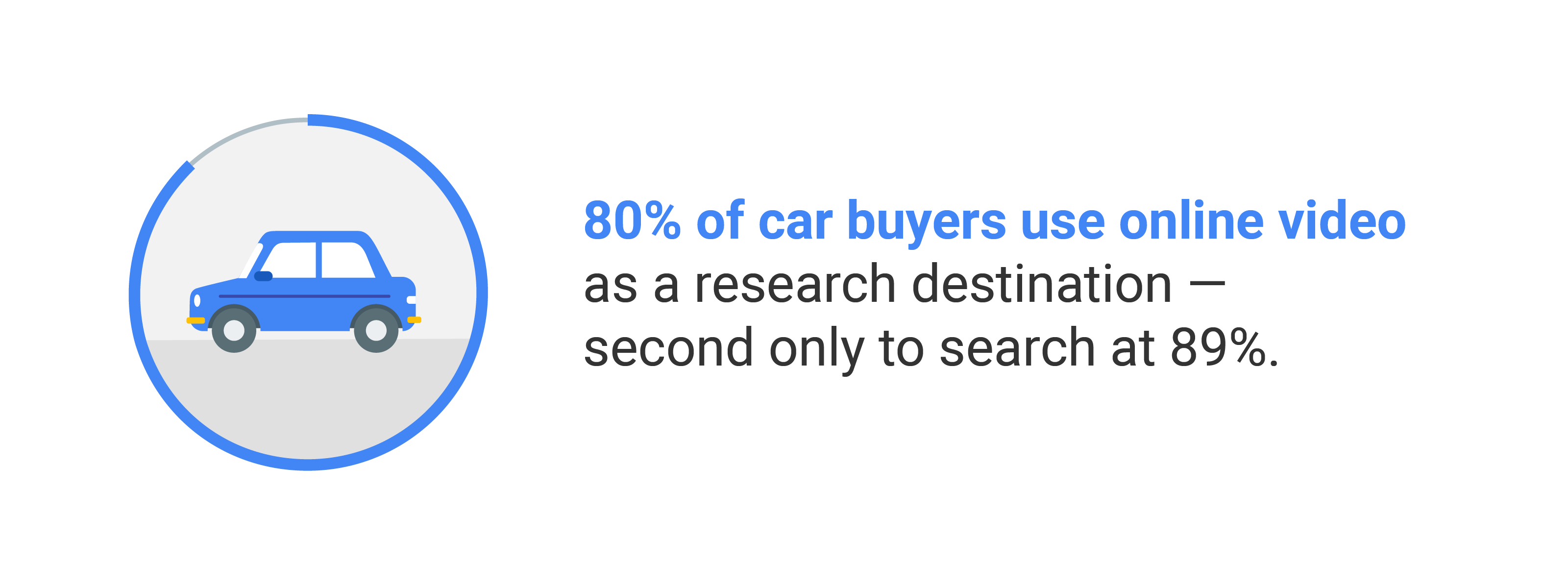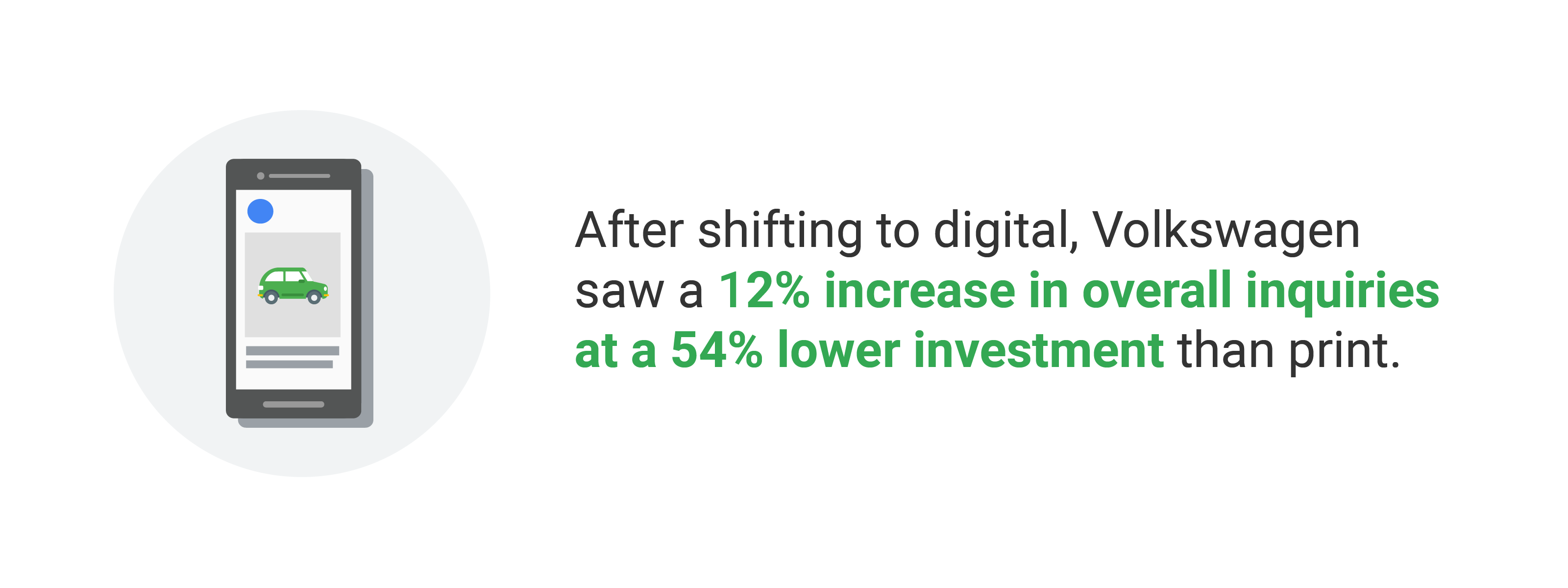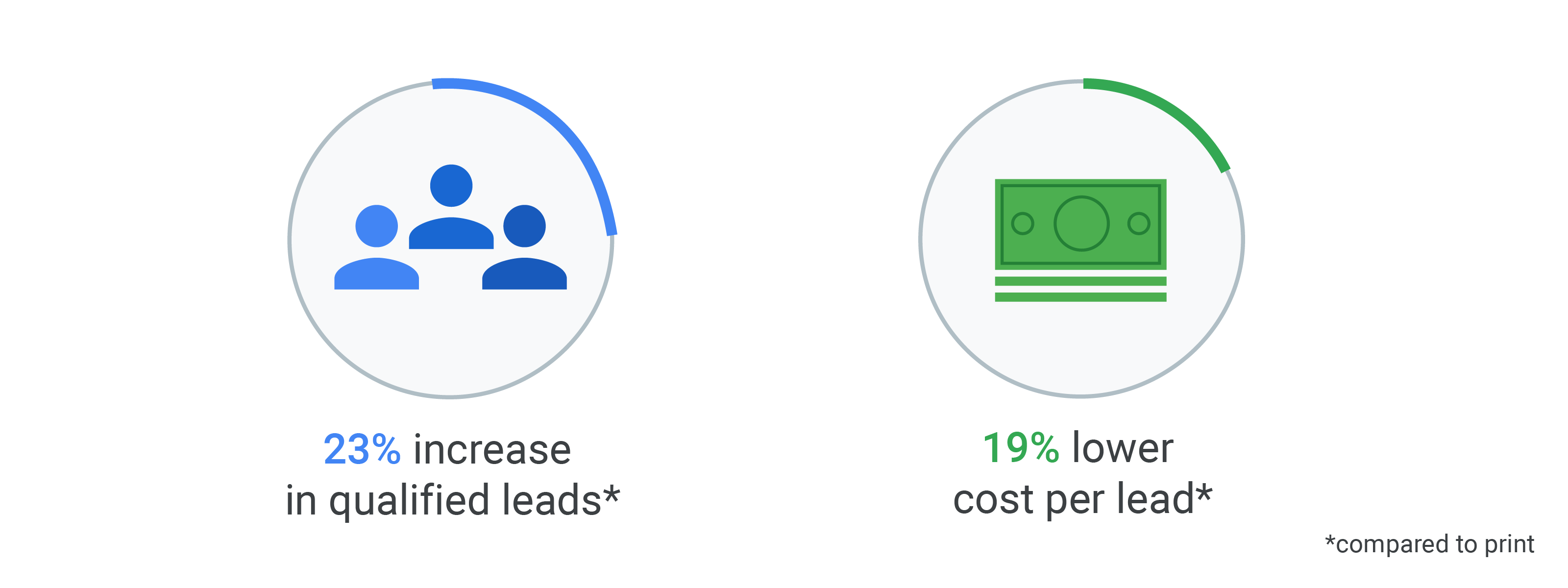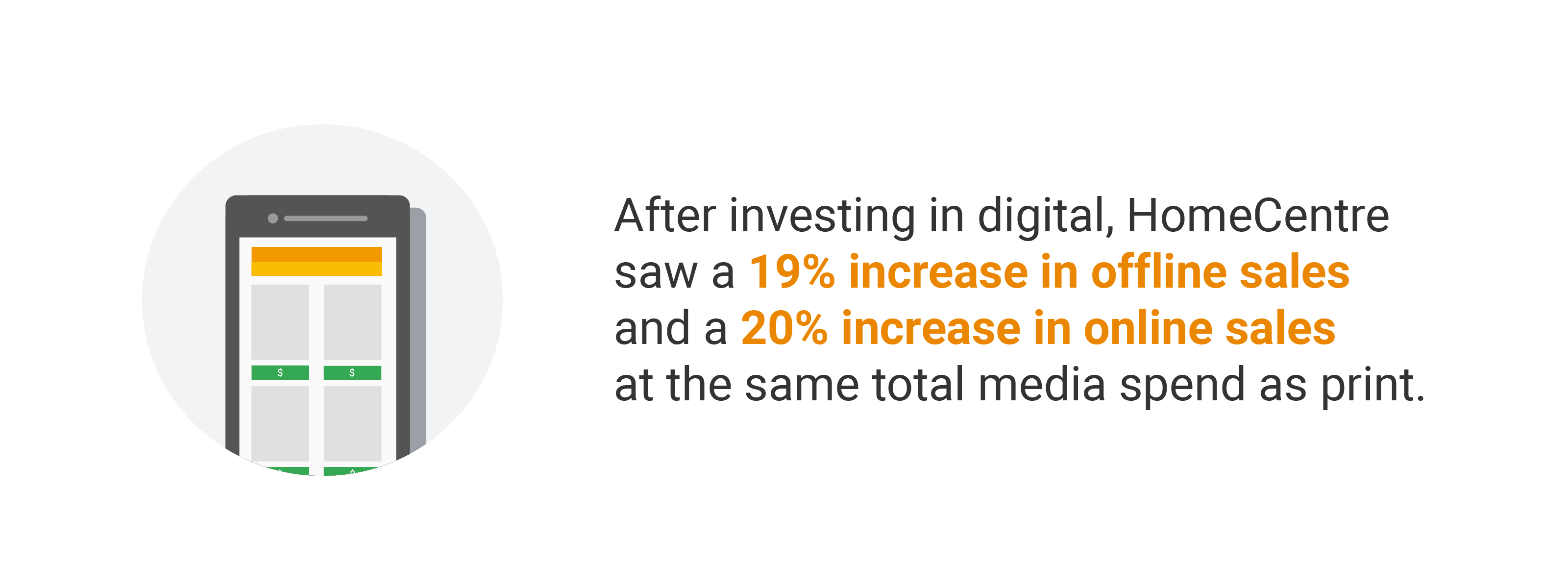For years, India’s auto and retail industries have relied on traditional print media, but as consumers increasingly turn to digital to browse, research, and shop, their expectations for brands to meet them online keep growing. Here, Google India’s Shalu Jhunjhunwala and Rachit Jain examine digital trends in the auto and retail industries and explain why being online is critical for brands to effectively reach consumers across the country.
India’s online population has climbed past 400 million and is expected to reach 650 million by 2020. Digital in India is poised to grow 30% YoY through next year, while traditional media like print will continue to grow although at a much slower rate of 2% YoY.1 That will essentially put digital on par with print by the end of 2019.
While the majority of purchases in India still happen offline, digital is playing an increasingly critical role throughout the purchase journey. Here, we’ll take a look at how digital is permeating two of India’s most traditional industries — auto and retail — and learn how three brands used it to drive results.
The adaptation of digital in car buyers’ paths to purchase
According to our recent study with Kantar TNS, even though all auto purchases happen offline, 90% of car buyers research online before setting foot into a dealership.2 And once they’re at the dealership, 65% of car buyers will continue to do research on their smartphones.3

Online video is also playing a bigger role in the car-buying path to purchase, with 80% of car buyers using it as a research destination — second only to search at 89%.4 And the majority of car buyers who watch online video take a follow-up action, such as checking a dealer’s website before going to the showroom.5 That means that consumers are more informed than ever when they enter a dealership — and that more and more walk-ins are being driven by digital.

Using newer technology, brands can now see and measure how their online ads impact offline performance. For example, Volkswagen India wanted to test how effective digital ads were at driving inquiries at its dealerships, so it partnered with Nielsen to identify test and control markets in Tamil Nadu and Karnataka, respectively. The brand used new video formats such as bumper ads to boost visibility for its offers and dealerships in cities/suburbs, and it served display ads through Display & Video 360 to drive calls and walk-ins to dealers in Tamil Nadu. The result was a 12% increase in overall inquiries at a 54% lower investment than print.
“The numbers prove that digital has the potential to drive sales at a hyper-local level,” said Steffen Knapp, director at Volkswagen Passenger Cars. “While print continues to be an important tool for a mass marketing strategy, we believe our customers are technologically advanced and well-informed about their purchases. Over the next few years, Volkswagen will see a transformation in its sales process driven by progressive digitalization and connectivity within its universe.”

Renault India conducted a similar experiment by measuring print and display advertising against the same KPI: qualified call leads to dealers. Using personalized click-to-call creative and custom audience targeting, the digital campaign drove a 23% increase in qualified leads at a 19% lower cost per lead compared to print.
The omnichannel retail journey
While digital plays a big part early on in car-buyers’ purchase journeys, the retail industry is tasked with reaching consumers who are increasingly browsing and buying across channels. More and more of these omnichannel consumers are emerging in India: We’ve seen a 50% increase in searches for “stores near me,” signaling that online searches for stores have become an integral part of the modern shopping experience.
Today’s mobile-first consumers expect brands to be there for them with helpful information in their moments of need — whether they’re researching a potential purchase or looking for a nearby store.
When India’s HomeCentre wanted to drive walk-ins and incremental sales while improving omnichannel return on ad spend (ROAS), it moved spends to digital in two key markets. The brand ran campaigns on search, served bumper ads on YouTube, and remarketed to users on the Display Network. The team measured impact by comparing sales lift in test markets to other markets. And ROAS improved — HomeCentre saw a 19% increase in offline sales and a 20% increase in online sales at the same total media spend as print. The success encouraged the brand to scale the campaign across India, resulting in a 5X increase in digital spend.

“While we always felt there was some influence of digital in driving our store sales, we had no conclusive proof. With this test, we were able to see the true omnichannel impact of digital marketing. We foresee digital playing a much bigger role in our marketing strategy going forward,” said Sitaram Kumar, VP at Home Centre.
The (digital) future of auto and retail marketing in India
Digital is growing faster than ever in India and can deliver measurable results for brands. Even in industries where purchases traditionally happen offline, digital can drive impact in ways that business managers can understand. Before implementing a digital strategy, ensure you’re following these three steps:
- Understand your audience: Be present with helpful information throughout consumers’ purchase journeys. Stop looking at digital as a lead-gen, last-click medium and start looking at how digital can have a full-funnel impact for your business.
- Stick to the basics: To ease the transition from print to digital, plan for digital like you’d plan any other campaign. Focus on reach and frequency, as well as on learning how your audience spends their time on digital platforms.
- Test and measure: Measurability is one of the biggest advantages that digital offers, so make sure you’re constantly testing, monitoring, and optimizing your campaigns. Understanding how to use digital to grow will become one of the biggest competitive differentiators for brands and marketers in India moving forward.








